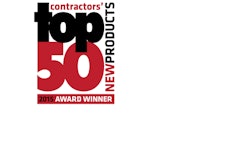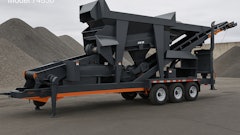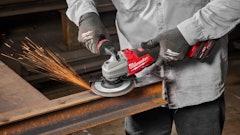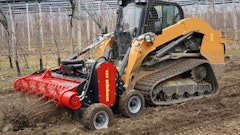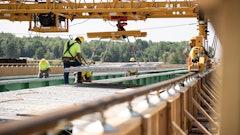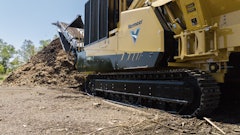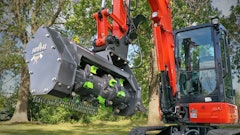
There are several kinds of brush mowers, or brush cutters as they are often called. The most important feature that distinguishes a brush mower is whether it is a walk-behind or a ride-on brush cutter. A ride-on brush mower allows the operator the added comfort of sitting while cutting and, with a wider cutting deck, is used to cut wider swaths of land. Some models can clear several acres within hours.
Even among walk-behind brush mowers though, there are different types. The biggest distinction is between rotary brush mowers and flail brush mowers. The rotary brush mower is the most common type, and it features a single rotary blade beneath the cutting deck. The walk-behind flail mower has multiple flail knives that are attached to a single drum. These knives most often rotate vertically, chopping the brush into fine mulch as they spin. Although they take a little longer to chop brush, flail brush mowers provide a finer cut than rotary brush mowers.
A good way to think of a rotary brush cutter, be it a ride-on or a walk-behind model, is as a beefed-up lawn mower. Brush mowers feature much stronger (and usually wider) blades than lawn mowers, and they also have sturdier spindle assemblies. Brush mowers also normally have larger engines than lawn mowers, which allow them to cut through thicker brush.
Walk-behind brush mowers use a limited-slip or a full-slip differential and this enables the operator to control the mower on rough ground and on slopes. Finally, brush mowers use air-filled pneumatic tires that can provide superior traction on rougher terrains. Some brush mowers also come in tracked models, which provide even more traction and can be easier to maneuver on slopes.
All of these differences work together to make brush mowers capable of doing a rough finishing cut over rough terrain and wide swaths of land.
What to look for
The most important thing to look for when choosing the right brush cutter for your rental fleet is durability that will keep the machine going through multiple brush mowing rentals. Will it stand up to the paces that rental customers will put it through long enough to make a satisfactory ROI? In answering this question, it’s important to look at the deck: is the deck material strong enough? Also, are the blade and the spindle sturdy enough? Will the transmission hold up in rental?
Brush mowers can use a variety of features to enhance performance. The blade system itself is one such feature. Flail brush mowers are not only going to make a finer cut of brush and tall grass, they are going to pull in the brush so the operator doesn’t have to get the cutting deck on top of it in order to cut it. Even with ride-on brush mowers there can be differences in the cutting system that can enhance performance. The Orec Brush Rover, for example, has a larger bar blade, but at each end of the bar blade there are two, smaller sharpened blades that provide a finer cut. This enables the rover to cut not only thick brush but to do a rough finishing cut of tall grass.
Many brush mowers will use adjustable settings, such as cutting heights to allow operators to raise the blades to cut thicker brush without getting bogged down, or to lower the blades in order to more completely cut tall grass. Some models can be adjusted from 2 inches to between 4 and 5 inches.
Some other things to consider when selecting a brush mower:
1. Safety
The most important safety features for brush mowers concern the blades: how is debris deflected and how do you engage and then disengage the blades? The brush cutter should have a metal deflector that prevents debris from being sent flying. The blade or blades should engage with a lever and then quickly stop when the operator lets go of the lever. It's even safer if there is two-stage blade engagement, as the operator has to go through two steps to start the cutting action, preventing accident operation.
2. Ease of maintenance
You'll want to find out how power is directed from the engine to the blades and transmission. Is there a belt, a shaft or is it a hydraulic system? Most brush mowers will have one of two systems: belts for both the blade and the drive or a hydraulic drive with a belt to the blades. Hydraulic drives not only give the operator variable speed control, but they also eliminate the worry of replacing drive belts. If the brush cutter does have belts, you'll want to make sure the tension can be easily adjusted, and that the belts are easy to access in case they do need to be replaced.
3. Simple operation
Since brush mowers are larger machines with larger engines than regular lawn mowers, and because they are often used in rough terrain and on hills, look for brush mowers that provide for easier maneuverability and added traction. A brush mower with a locking differential can give you added traction by locking in the axle to get both wheels moving in tandem. A brush mower on tracks gives you great traction on rough ground and on slopes, and is extremely easy to turn.
For wheeled mowers, a feature that assists the operator in turning the machine can be a huge help to the operator and can cut back on operator strain. The Orec Samurai features a front pivot wheel that makes turning the brush mower easier, allowing the operator to turn the machine around obstacles and around corners.





